Last Updated on: 30th August 2022, 08:55 pm
Kosovo’s capital of Pristina is seen by many travelers as a place to pass through quickly. As atmospheric as the city center is, it has relatively little to offer tourists. But what often go overlooked are three fascinating, yet entirely distinct, attractions on the city’s outskirts. Gračanica Monastery, the Ulpiana Roman ruins, and the Pristina Bear Sanctuary can easily be combined for one of the most unique day trips you’ll experience in the Balkans.
Luckily, all three sites can be visited easily and cheaply via public transport (plus some walking), which you can learn more about below.
Gračanica Monastery
Located about 10 km east of Pristina, Gračanica is one of the prominent ethnic Serb enclaves in the region. Around 10,000 people live in the town, many of them Serbs who fled central Pristina during the war of the late ’90s.
But Gračanica has been important for Serbs for centuries. In 1321, Gračanica Monastery was founded here by Serbian king Stefan Milutin, one of the most powerful monarchs of medieval Serbia.
It was built atop two earlier incarnations, however – one from the 13th century and another as old as the 6th century.

The main church represents a mixture of Serbian and Byzantine architecture. It features a rectangular floor plan, with its tall central dome surrounded by four lower ones. In between them are multiple tiers of arches, resulting in a complex but beautiful design – both inside and out.
The church’s interior is filled with stunning murals that remain in an excellent state of preservation. The surviving frescoes largely date from the 13th-16th centuries. But as photography is discouraged inside, you’ll just have to go and see them for yourself.


Gračanica Monastery survived multiple attacks by the Ottomans throughout the 14th century, including during the 1389 Battle of Kosovo. Nevertheless, the monastery survived and prospered throughout the Ottoman era, with new frescoes and icons being added over the years.
Much more recently, the monastery survived a couple of NATO bombings in 1999, and Gračanica is now protected as a UNESCO World Heritage Site.
For those doing further traveling throughout Kosovo, King Stefan Milutin also founded Our Lady of Ljeviš Church in Prizren. And for those doing a wider tour of the Balkans, there’s even a replica of Gračanica Monastery in Trebinje, a Serb-majority city in southern Bosnia & Herzegovina.


Nearby the monastery is a statue of Miloš Obilić, a 14th-century Serb knight who assassinated Ottoman sultan Murad I during the Battle of Kosovo. To this day, he remains a prominent symbol of Serb nationalism.
Sadly, violence and civil unrest continued in Gračanica through the early 2000s. And to the north of the monastery, a local park contains a response to Pristina’s Newborn Monument.
Erected in a similar style, the monument simply spells out the word ‘Missing’ in reference to local Serbs who went missing during the war of the late ’90s.

Ulpiana Roman Ruins
As mentioned above, Gračanica Monastery was established on the site of an earlier 6th-century church. But the history of Christianity in the region goes back even further than that.
About 25 minutes on foot from the monastery are the Ulpiana Roman ruins where visitors can explore the foundations of early Byzantine basilicas.
Admittedly, Ulpiana wasn’t on my itinerary for the day, as I had no idea it even existed until seeing some local road signs. But looking it up, I saw that it was a reasonable 2 km walk away, and I’m certainly glad I made the detour.
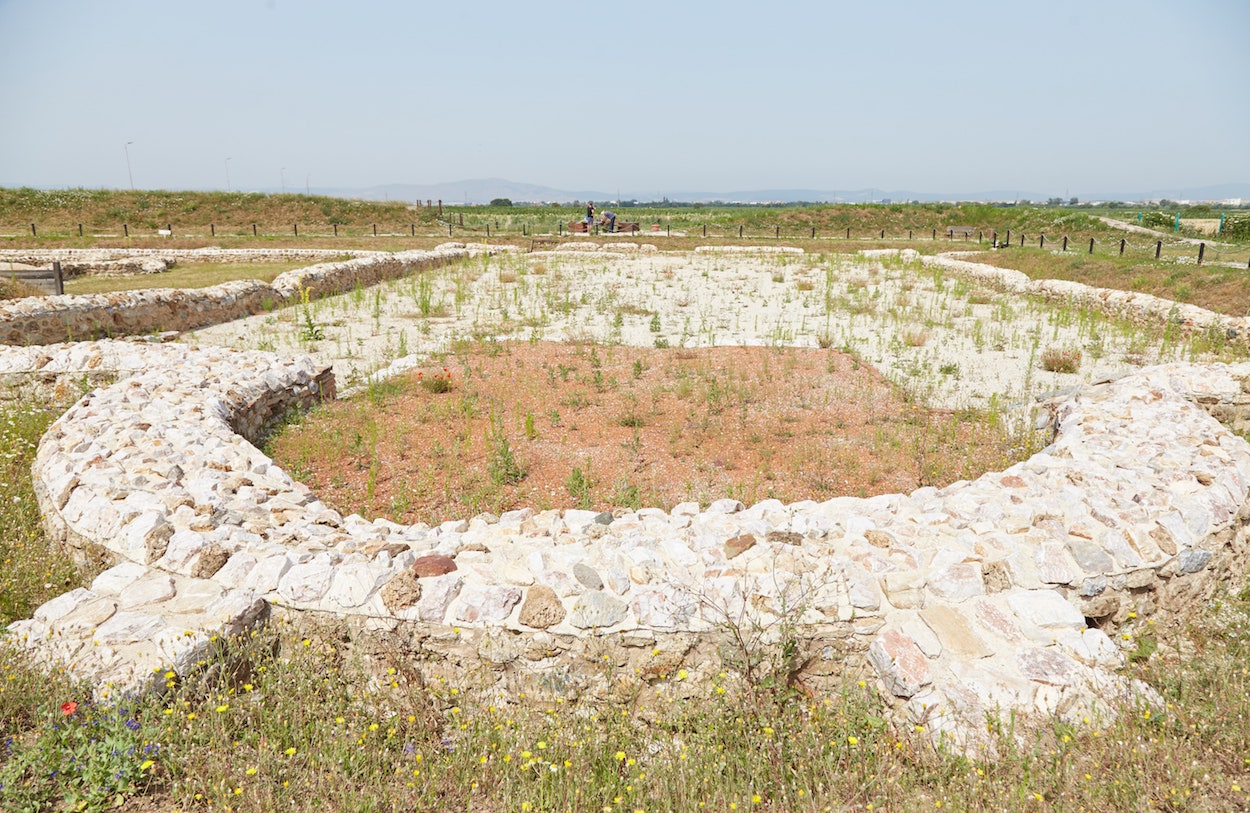
Ulpiana was originally a settlement of ancient Dardania, a kingdom that existed alongside neighboring Illyria and Macedonia before the Romans took over in the 1st century BC. From then on, the town expanded and took on a typical Roman character.
It prospered for hundreds of years, reaching its peak in the 3rd-4th centuries when it thrived as an early Christian center. Upon being devastated in a 518 earthquake, it was rebuilt during the reign of Byzantine emperor Justinian.
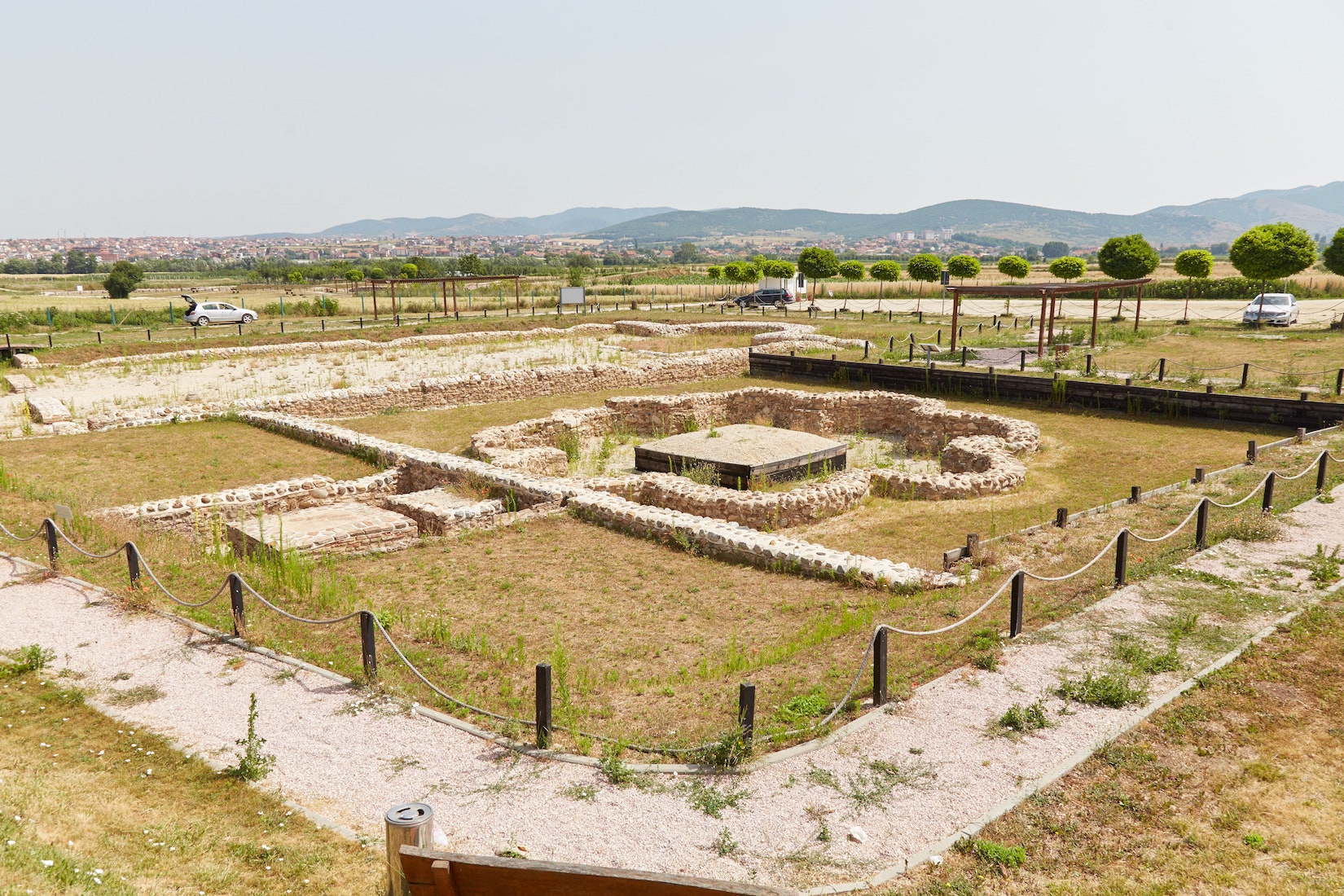
Entry to the site is completely free. And while little remains except for foundations, the overall area is quite large, with each landmark being accompanied by comprehensive English signage.
Near the entrance is what remains of the Episcopal Basilica, which dates to the 5th-6th century AD. Its floor was once entirely decorated with mosaics. Just next to it was the Baptistry, used to convert local pagans to Christianity.
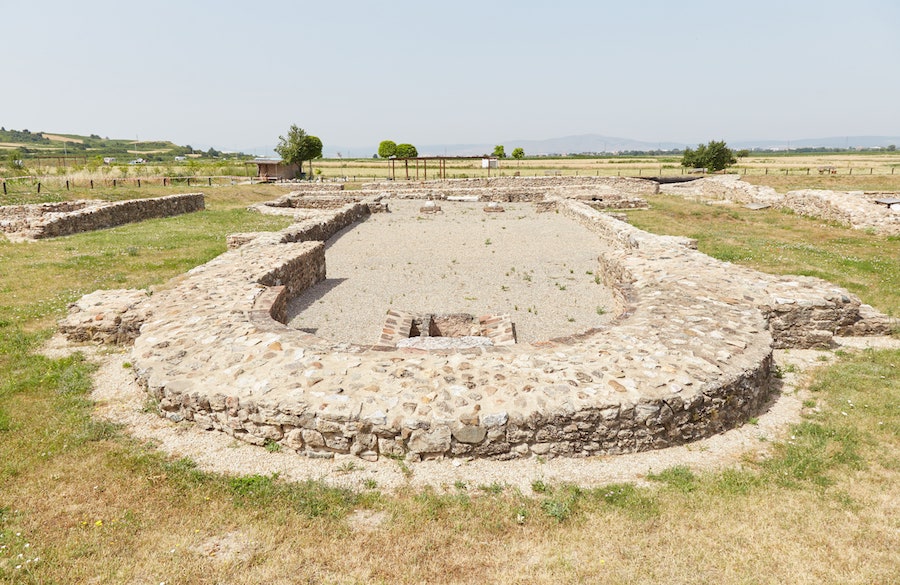
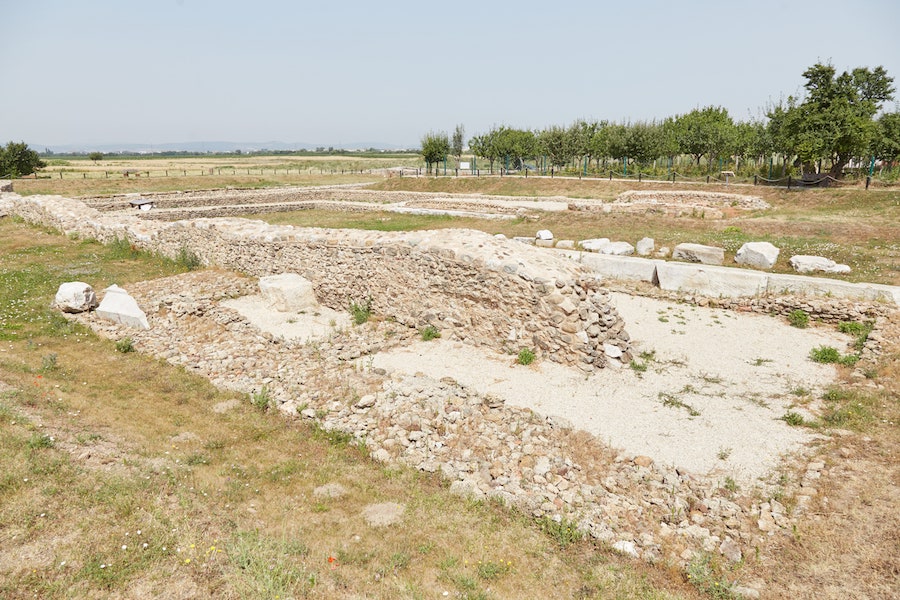
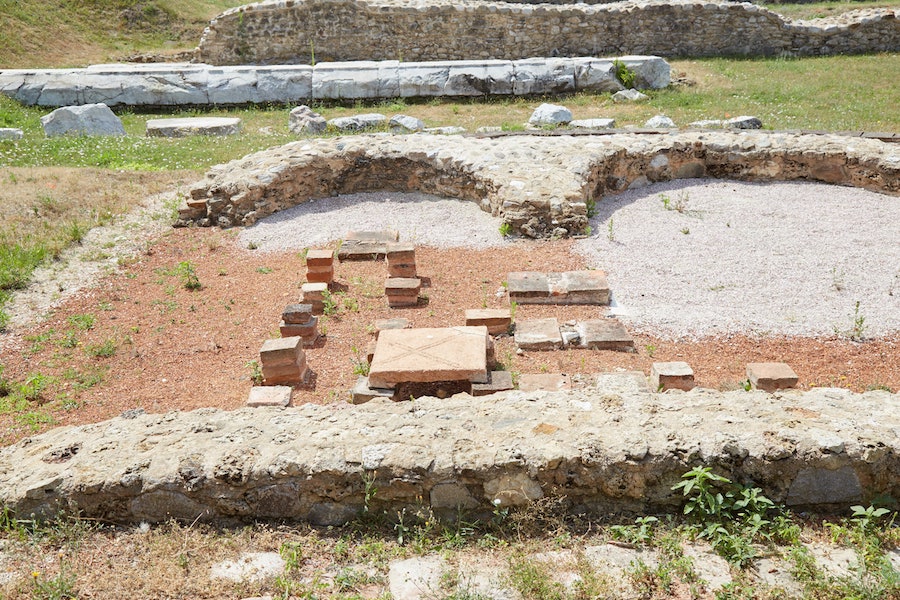
Moving on, you’ll find another early basilica from the 6th century built during Emperor Justinian I’s reconstruction campaign. Nearby are the ruins of a pre-Christian temple from the early 2nd century AD, established during the rule of Trayanus (r. 98-117). Archaeologists believe its portico would’ve been completely covered in mosaics.
Also in the area is a public bath that was active until the early 4th century.

Moving along, you’ll reach the ruins of the Northern Gate, which long functioned as the city’s main entrance.
And further north, located outside of Ulpiana’s city limits, is one of the archaeological site’s most interesting sections: the Northern Necropolis. Walking around, you can see numerous marble sarcophagi inside brick structures known as Memoria.
With excavations currently taking place at Ulpiana, expect the site to grow even more in the near future. But even as it stands today, it’s well worth the detour for those with the slightest interest in Roman history.
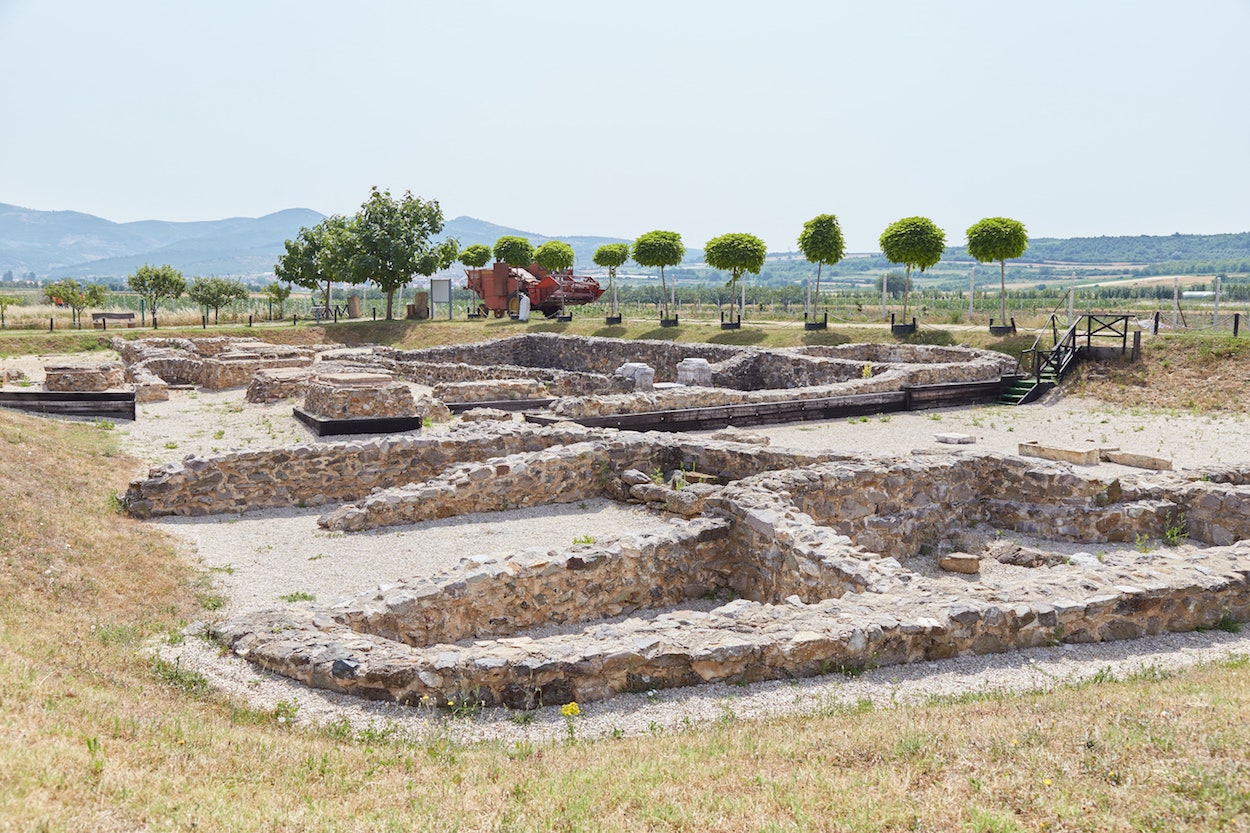
The Pristina Bear Sanctuary
When one thinks of Kosovo, bears probably aren’t the first thing that springs to mind. But as surprising as it may sound, the Pristina Bear Sanctuary is easily one of the capital’s top attractions.

Most of the bears kept here were rescued from captivity. For whatever reason, keeping small bears in cages at restaurants to please patrons became somewhat commonplace following the war of the ’90s. And the inhumane practice persisted for a couple of decades.
It wasn’t until 2011 when Austrian forces working with the KOFR (the NATO-led Kosovo peacekeeping force) helped pressure authorities to finally outlaw it. Now, the bears that get discovered and confiscated by authorities are brought here to this sanctuary, established by the Austrian NGO Four Paws.
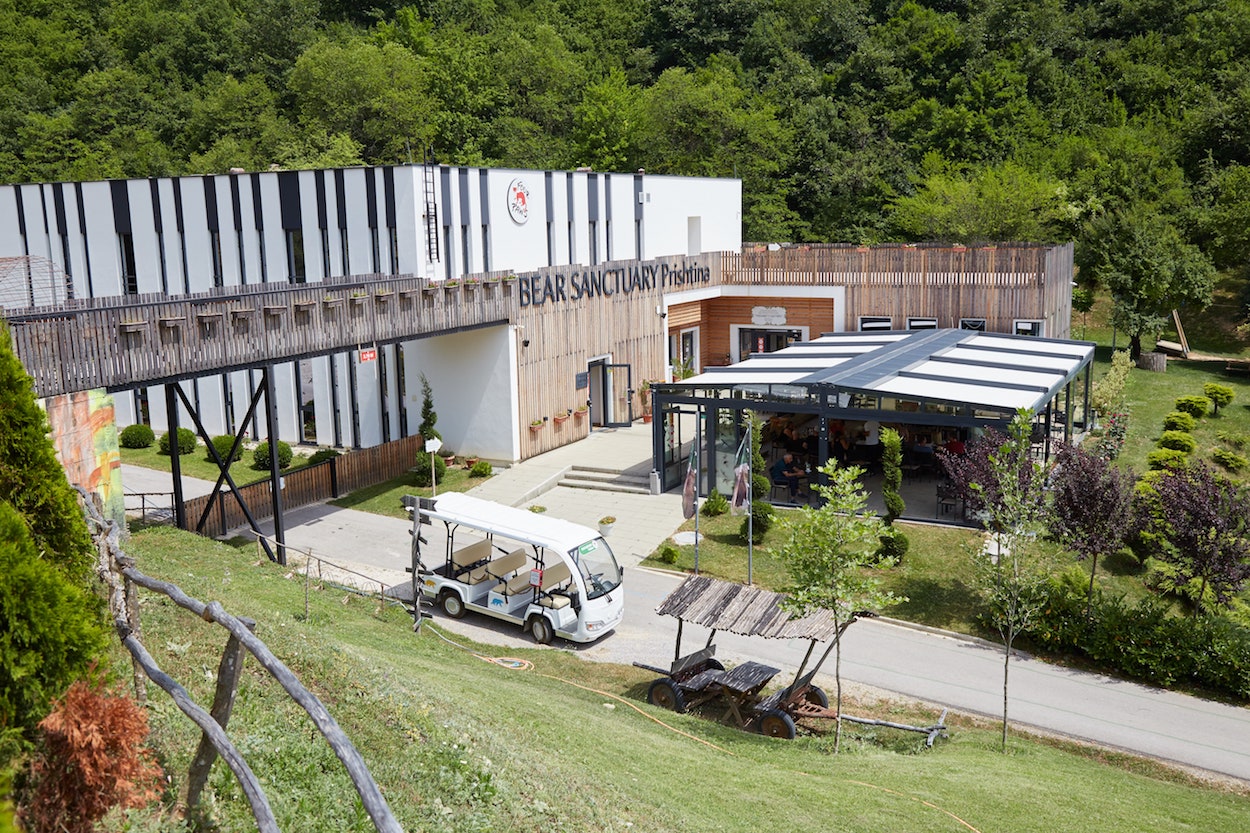
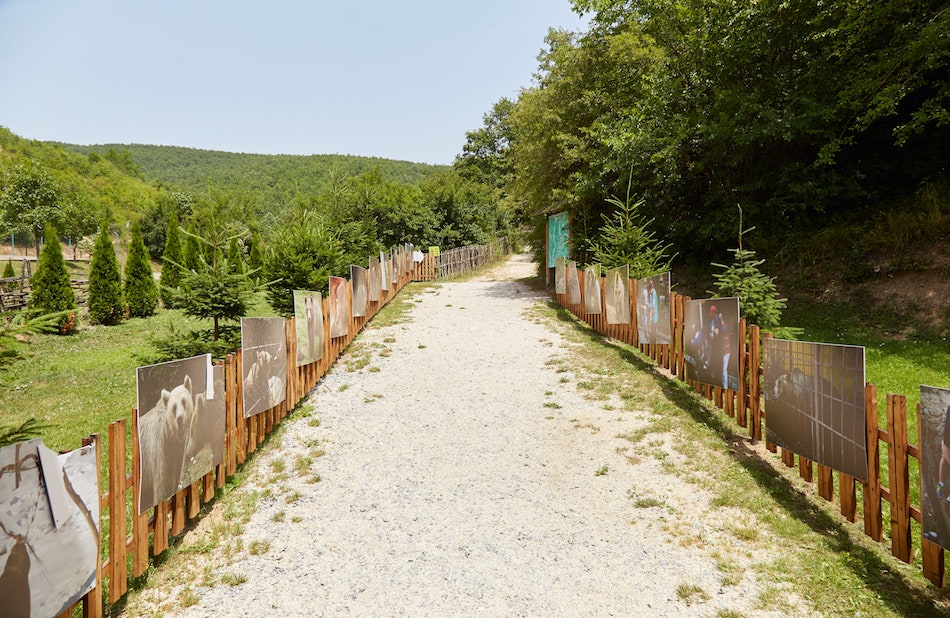

The spacious sanctuary takes up around 16 hectares and is currently home to around 20 bears. While the bears aren’t quite in the wild, they have plenty of space to roam around – much more so than an animal at a zoo.
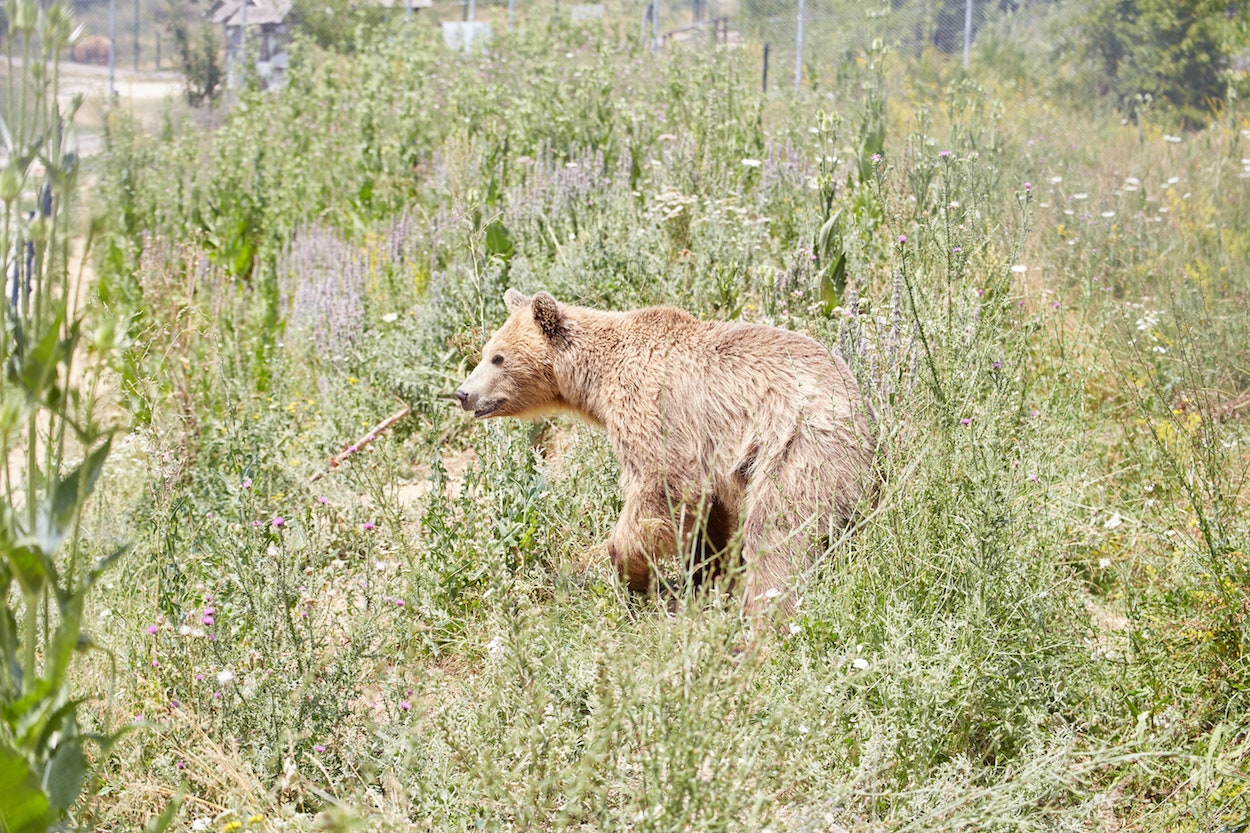
The sanctuary is divided up into certain subsections, with some being home to multiple bears, and others just one. This likely has to do with a particular bear’s age, upbringing and temperament.
While touring the site, you can learn the name of each bear along with their backstory. One of the first bears you’ll encounter is Andri, whose story is rather heartbreaking.
Andri wasn’t rescued from captivity but discovered near a mountain road, completely alone. And as mother bears are known to never abandon their young, it’s presumed that Andri’s mother died while he was still a young cub.
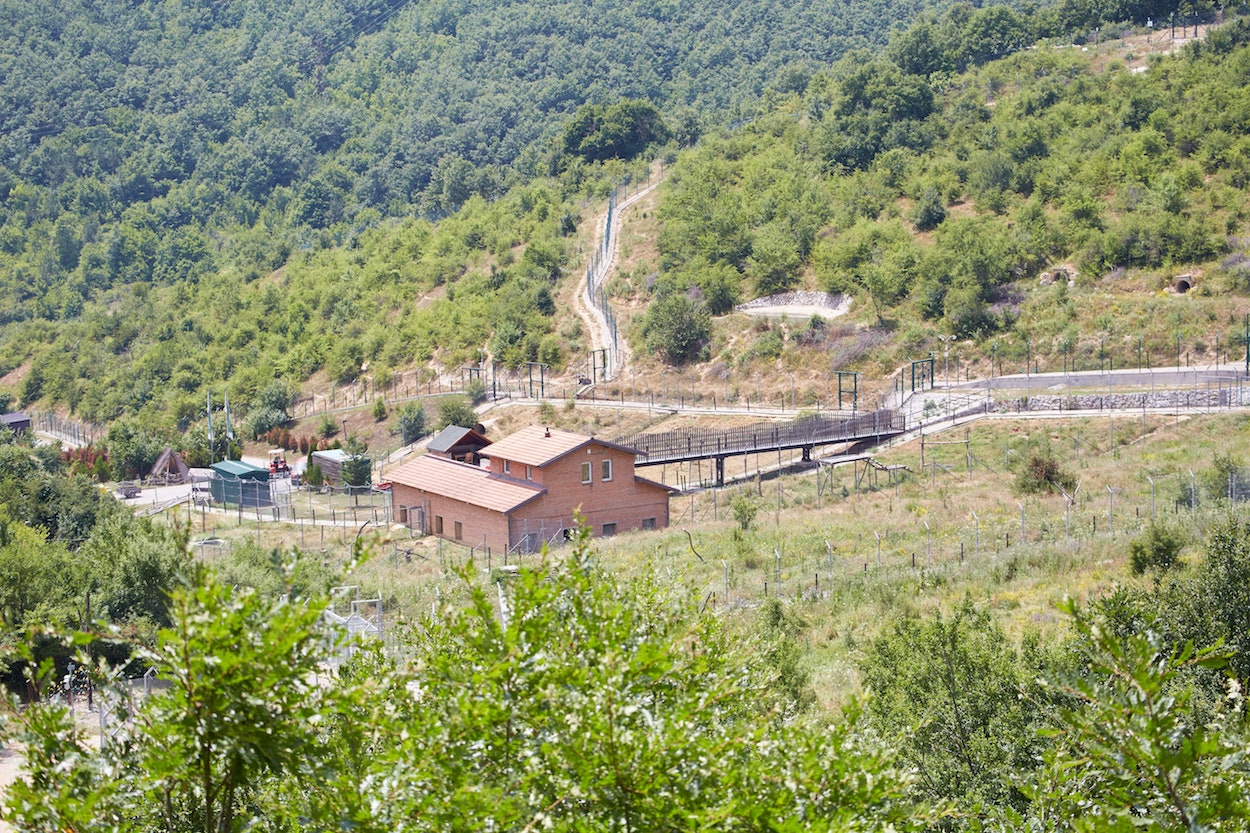
Walking around the sanctuary, it’s quite exciting to get to see brown bears from such a close distance like this (through ample protective fencing, of course). Notably, however, all the bears I encountered seemed totally indifferent to human visitors, barely even glancing at us.
Lots of the bears simply paced back and forth in their enclosures, which, according to the official website, is typical behavior of bears that were once held in captivity.
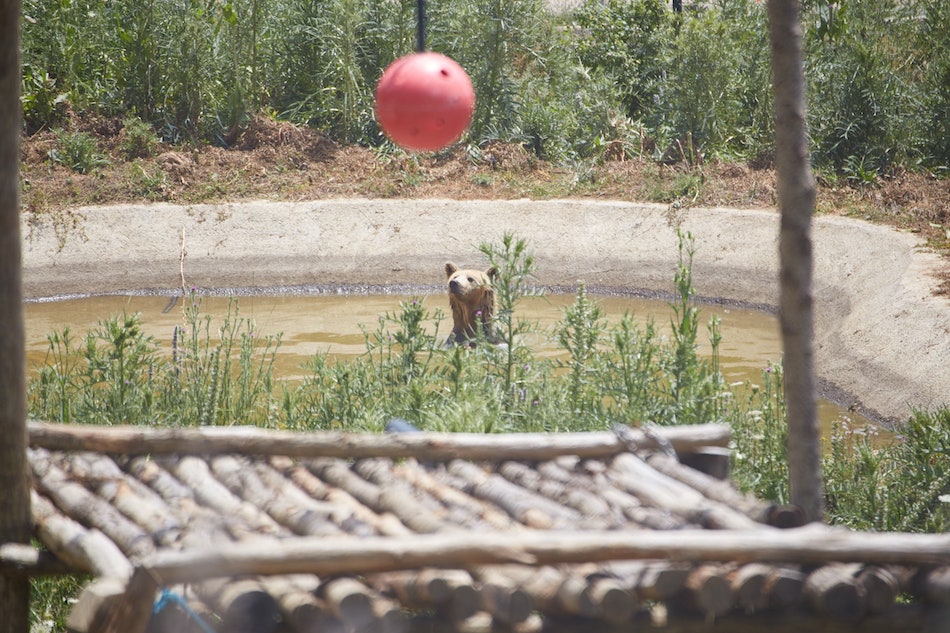
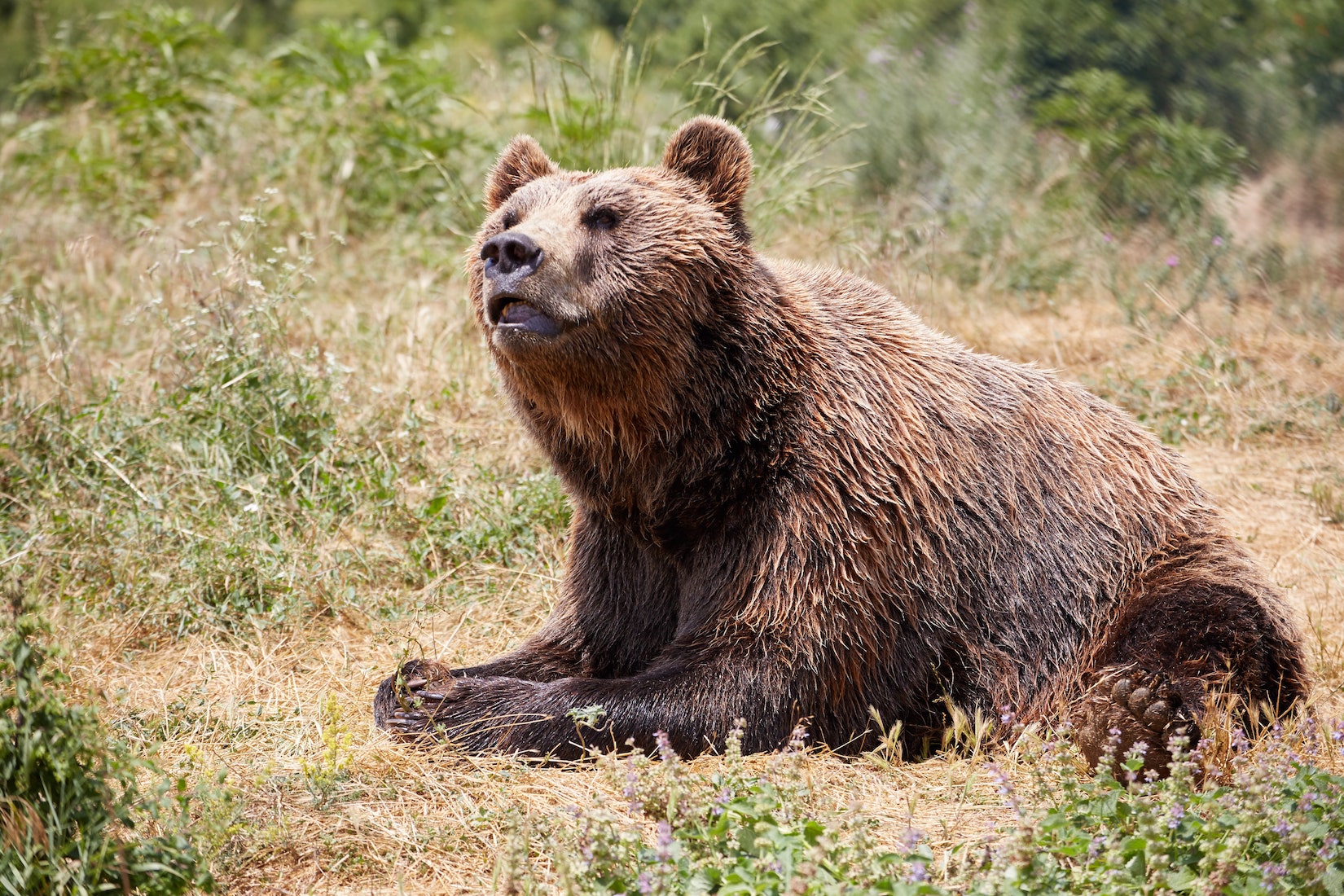
It was a scorching hot day, and it was nice to see that each space was equipped with a private pool in which the bears could cool off and take it easy.
Aside from just looking at the bears, there are numerous activities for kids, such as an interactive labyrinth/quiz hybrid. The wrong answer will lead one to a dead end, while knowing the right bear facts will lead you safely to the exit.
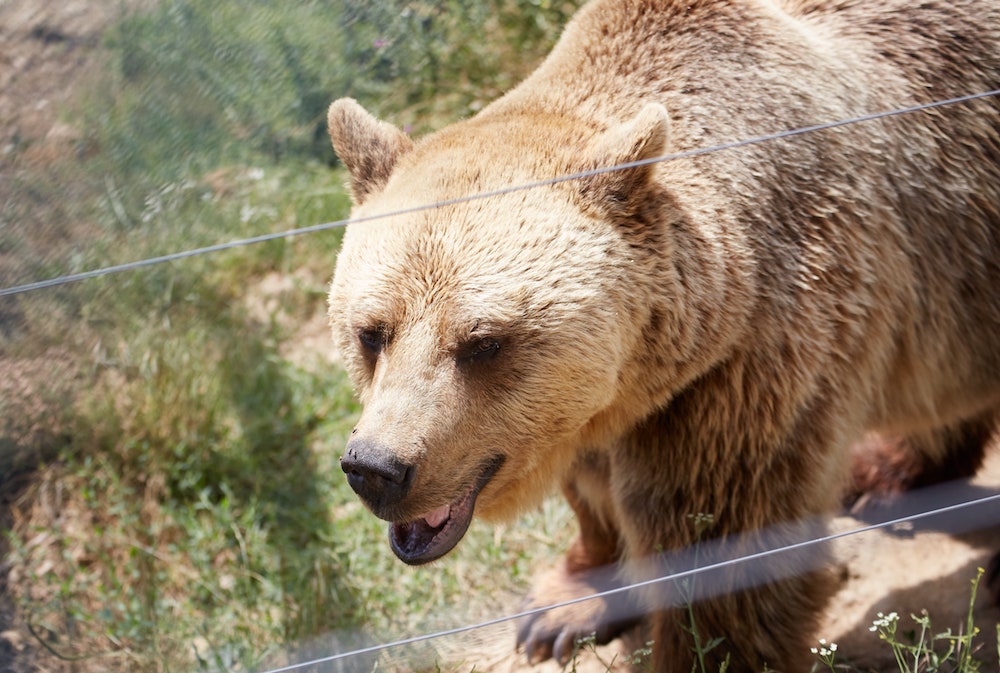
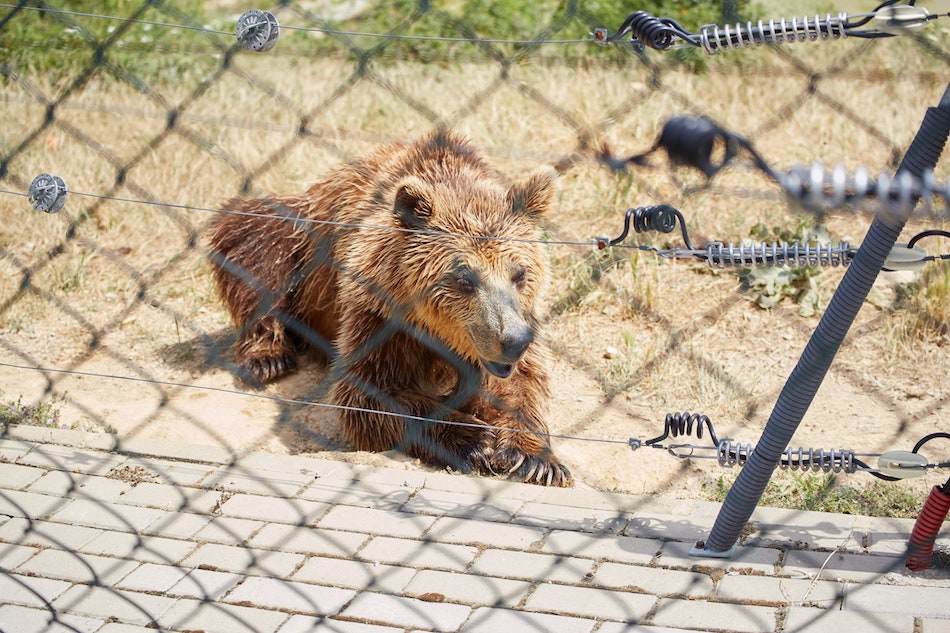
Also on display is a depressing example of the typical cages many of these bears once lived in for years. Clearly, they’re much too small for such large animals.
The Pristina Bear Sanctuary costs just €2 to enter, and is open Monday-Sunday from 10:00 – 19:00. Check below for info on getting there via public bus.
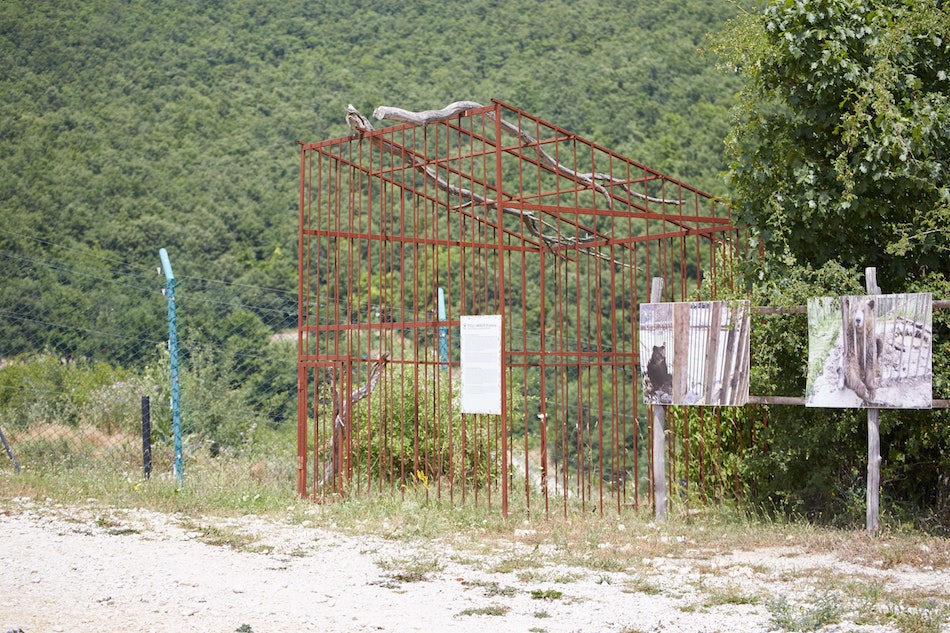
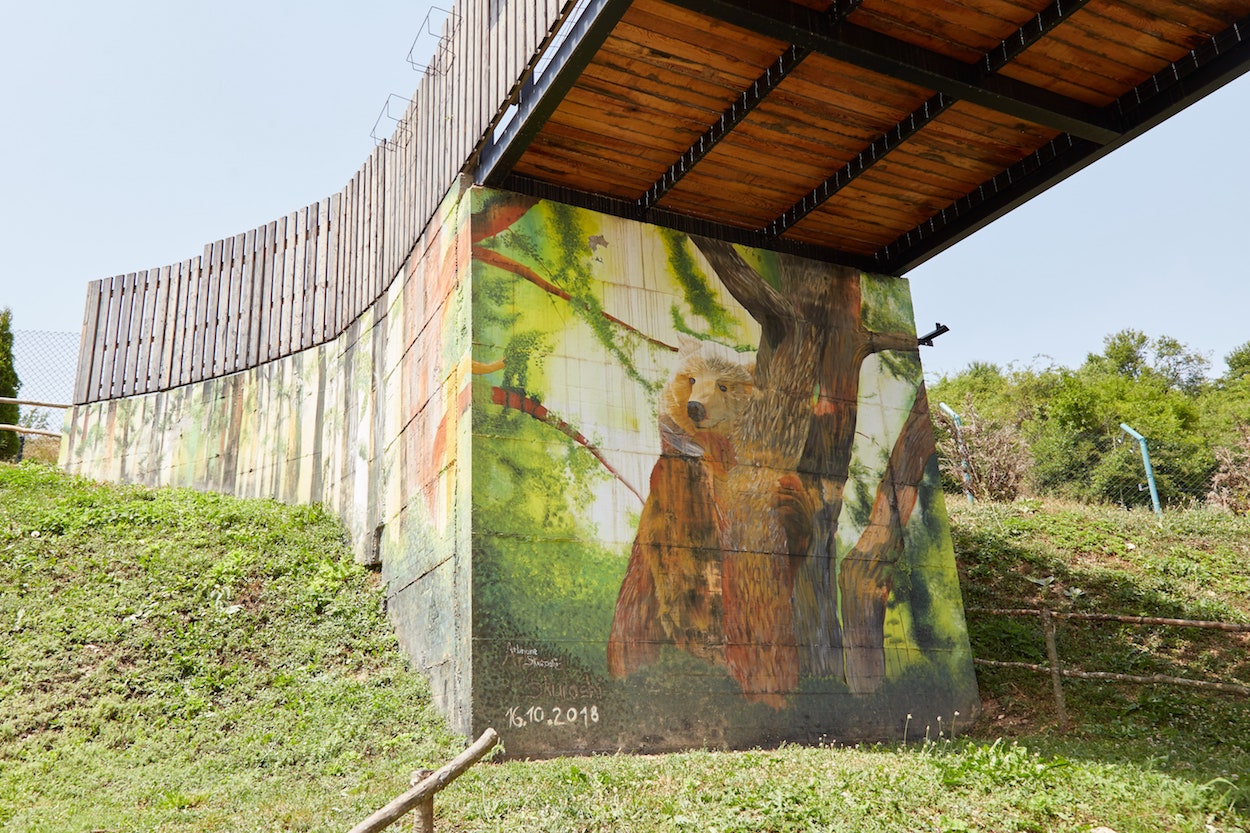
Additional Info
Visiting all of the locations above can be done cheaply and relatively easily by public transport from Pristina, albeit with a lot of additional walking. First, head to the main bus terminal and find a bus bound for Gjilan.
Buses leave every half-hour, and you can simply board the bus and pay the conductor afterward. When paying, tell him that you want to get off at Gračanica. The journey from Pristina to Gračanica takes just about 20 minutes.
As mentioned above, you can walk from the monastery to the Ulpiana ruins in about 25 minutes one-way. Whether you want to make the visit is up to you. But either way, you’ll need to return to the same bus stop where you got dropped off.
Again, wait for a Gjilan-bound bus (Note: There may be some minibuses that have Gjilan written on them, but don’t board them. Instead, wait for the same type of coach bus like the one you rode earlier.)
The Pristina Bear Sanctuary is located near the village of Mramor. You will want to get off at the bus stop near the ‘Old Delfina Gas Station’ which is just past the long lake (the stop is clearly marked on Maps.me).
Getting off the bus, there are a few restaurants around here where you can stop for lunch. But you’ll also find a restaurant at the sanctuary itself.
The walk from the bus stop to the Pristina Bear Sanctuary takes about 40 minutes. You’ll first need to walk west on the opposite (north) side of the lake, before taking the road north for awhile. You’ll be relieved to find a freshwater tap upon your arrival.
Returning to Pristina, you’ll need to walk all the way back to the bus stop again. This time, wait on the opposite side of the road.
In my case, I was only waiting for the bus for a couple of minutes before a random car stopped and motioned for me to get in. This being the Balkans, I didn’t hesitate to enter the vehicle!
There were two older men inside who barely spoke any English, but I confirmed that I was indeed going to Pristina. I wasn’t sure if the driver just felt like giving someone a ride, as is sometimes the case in these parts, or if he was hoping for some extra cash. Once we were in the city, it turned out to be the latter.
The driver just wanted a couple euro which I gladly gave to him. With no ridesharing services existing yet in the Western Balkans, this was basically Uber but without the app!
Most travelers arrive in Pristina by bus – often from another Balkan country.
In my case, I took a bus from Skopje, North Macedonia. A minibus departed around 10:00 am and cost around 350 MKD. (Be sure to confirm time and price in advance, as these things often change in the Balkans.)
You can also find direct buses from other Balkan cities like Tirana, Albania, Podgorica and Ulcinj, Montenegro, and various cities in Serbia. There are also numerous routes linking Kosovo with Germany.
Note: If you’re visiting Kosovo first and then plan to visit Serbia later, you must enter and exit Kosovo via a third country and then enter Serbia directly. As Serbia considers Kosovo to be part of its territory, there is no passport check when traveling from Kosovo to Serbia. Thus, when leaving Serbia, your passport will be lacking an entry stamp which can get you into trouble at the border.
You can also easily travel to Pristina from other cities in Kosovo like Prizren and Peja. Kosovo has an organized and well-functioning bus system (a pleasant surprise for those coming straight from Albania!) Buses leave on a set schedule, and most buses in Kosovo are larger coach buses as opposed to cramped minivans.
For those coming from further away, Pristina International Airport has direct flights to various cities in Europe and Turkey.
For whatever reason, accommodation in Kosovo is surprisingly pricey when compared with neighboring Albania and North Macedonia. Therefore, those on a budget may have to settle for somewhere a bit out of the way.
Basically, as long as you’re staying somewhere within a reasonable walking distance of the main road, M9, you should be fine. Even better is basing yourself near the bus station, especially if you’re only in town for a few days.
While I normally go with a budget hotel on Booking, the best deal I could find this time was on Airbnb. I booked a place simply called ‘Small Home,’ where I had a private room, bathroom and kitchen.
With all the Airbnb fees included, it cost me $32 USD for two nights. It was a decent stay overall and walkable from the city center.
It was too far to walk to the bus station, however. And while I did try taking the public city bus once, it failed to arrive at the nearest bus stop. The locals waiting there were also confused, and we ultimately all had to walk ten minutes to the next stop over.
Needless to say, I took a taxi to the station when leaving town, which cost me 4-5 euro.
